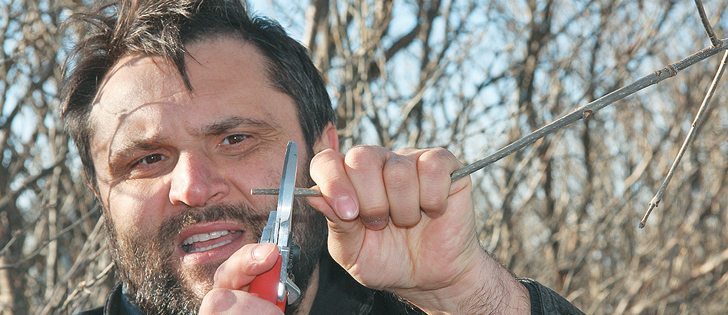New programs available to help cover costs
NOBLEFORD, Alta. — Farmers realize the value of trees and shrubs in their fields and farmsteads.
That’s why Alberta Agriculture woodlot specialist Toso Bozic thinks he hasn’t seen any reduction in Alberta rural tree plantings, despite cancellation of the federal shelter belt program two years ago.
“I haven’t seen a slow down. People really need the trees and they want to plant the trees,” Bozic said.
“They will greatly miss the PFRA (Prairie Farm Rehabilitation Administration) shelter belt program. No question about that. Everybody I talk with says we should have kept the program, but I guess it is what it is.”
Read Also

Using artificial intelligence in agriculture starts with the right data
Good data is critical as the agriculture sector increasingly adopts new AI technology to drive efficiency, sustainability and trust across all levels of the value chain.
He talked about shelter belt planting and rejuvenation April 7 in Nobleford at an event hosted by Leth-bridge County and the Nobleford Agricultural Society.
Bozic said many Alberta rural municipalities have programs through which they can order trees and shrubs for ratepayers and obtain better prices for large orders.
Trees and shrubs for shelter belts are no longer available for free, but there is an opportunity for cost savings through the federal-provincial Growing Forward 2 program, said Lethbridge County extension specialist Dwayne Rogness.
The program can cover 50 to 70 percent of costs related to shelter belt establishment, depending on the project. However, it applies only to field shelter belts and not farmsteads.
Bozic and tree expert Pieter Van Der Schoot of the Mycological Society of Alberta took about 20 people to a farmstead shelter belt near Nobleford last week and pointed out its attributes.
When planting a new shelter belt, they recommend using more than one row of trees and planting a variety of species.
“Be creative, and I can’t stress enough, plant as many varieties as you can. Having different species really brings stability to the whole yard,” said Bozic.
Variety will ensure no single pest or disease will wipe out the entire shelter belt and will also attract a variety of wildlife, insects and birds. As well, different tree and shrub species have different lifespans, so variety will add overall longevity to the shelter belt.
“Trees are quite resilient. The more you plant, the better.”
Bozic advised a gradual approach rather than complete removal when rejuvenating existing shelter belts.
“Develop a plan over three or four or five or even 10 years,” he said.
“Go in stages. Don’t try to remove everything at once and start from scratch.”
Bozic said a certain number of dead trees can also be retained, as long as they don’t present a threat to safety around buildings and people. Dead trees provide habitat for beneficial birds and insects, he added.
He said salt and chemical spray drift is the most frequent killer of shelter belts. Few are killed by insects or disease, so producers should not be in a hurry to address those issues in their trees.
Shelter belts can be taken for granted once established, said Bozic, but some attention is recommended.
“Once in a while, just pass by, sometimes just for relaxation,” he said.
Observe changes to leaf or needle colour and weed presence so that action can be taken before shelter belt health is affected.
Contact barb.glen@producer.com
















